| Year-round Resident | |
| Infrequently Seen |
Spring: Eastern Bluebirds are common year-round residents in the Washington metro area, but they are infrequently seen at Monticello Park. They are much more common in areas that have bluebird nest boxes, such as Occoquan Bay National Wildlife Refuge or Huntley Meadows.
Fall: Eastern Bluebirds are rarely seen during the fall at Monticello.
Where to See Them in the Park
Eastern Bluebirds have been seen only three times at Monticello since 2005. There is no best place to look for them in the park.
Physical Description
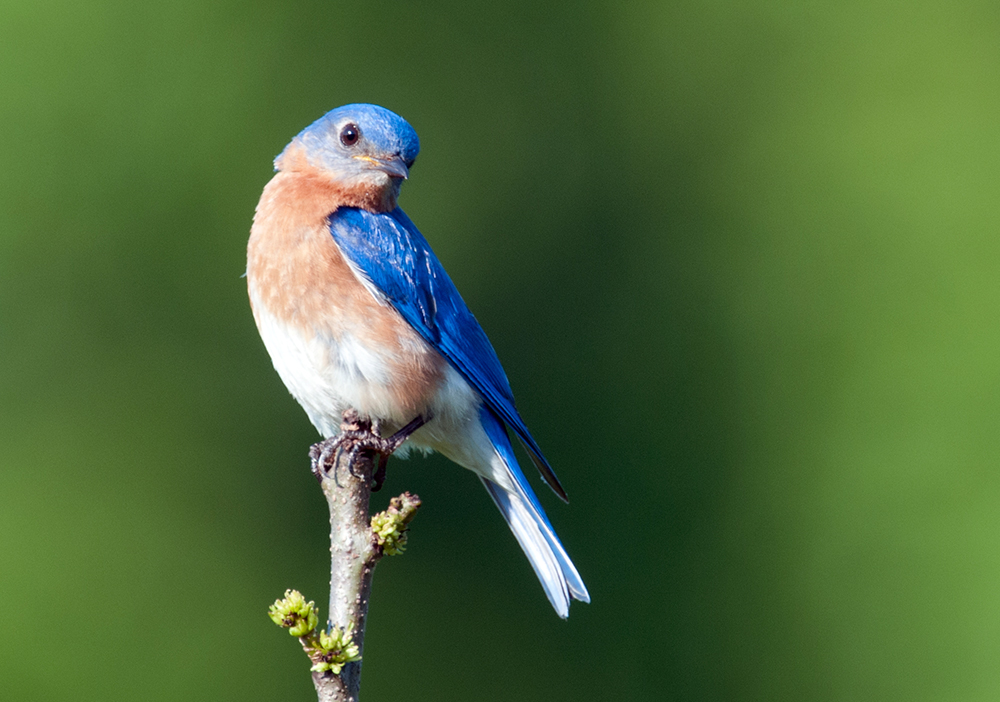
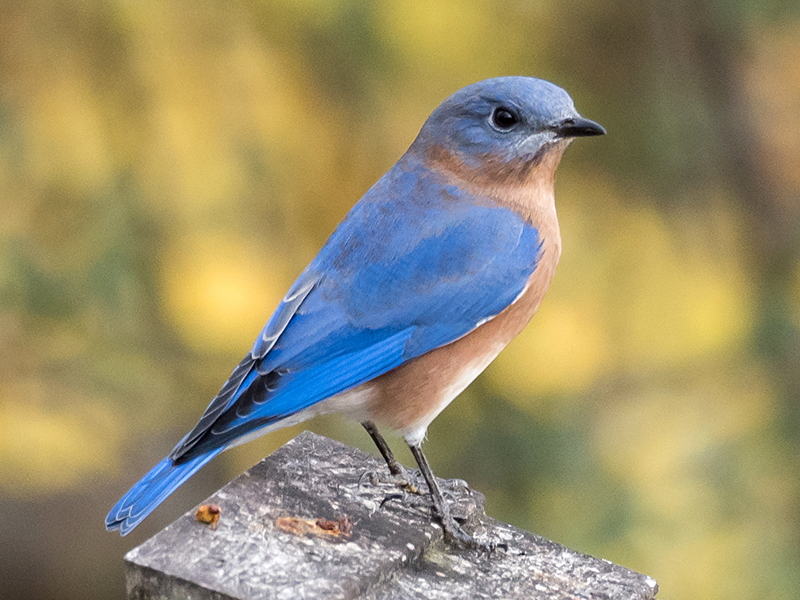
Adult bluebird plumage is similar in the spring and fall. Male bluebirds have a white belly, a rufous breast, and a brilliant blue back. The blue is lighter than the color of an Indigo Bunting or Blue Grosbeak. There is no other species who looks similar.
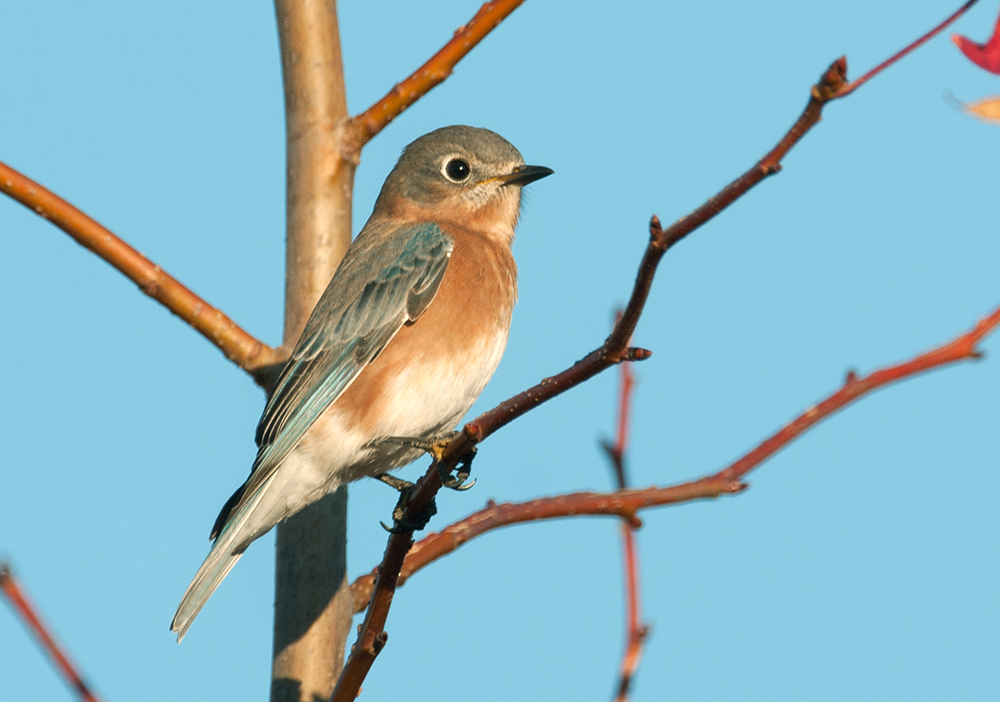
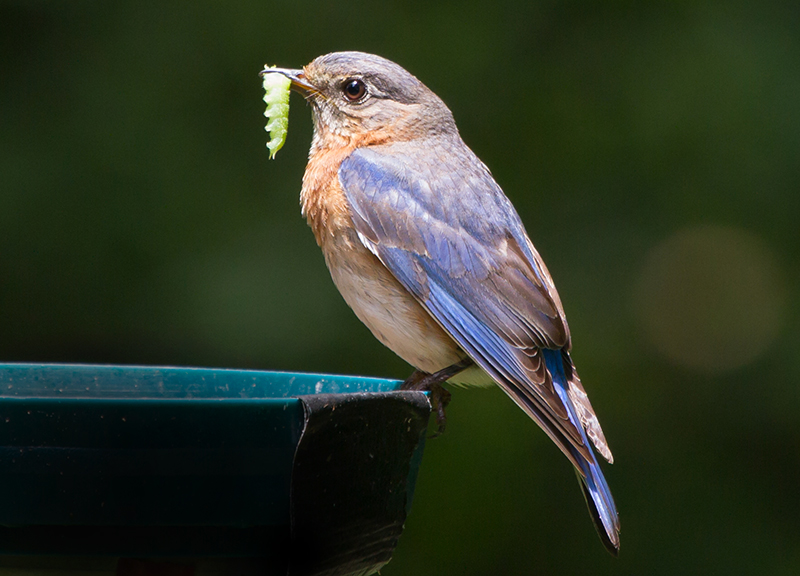
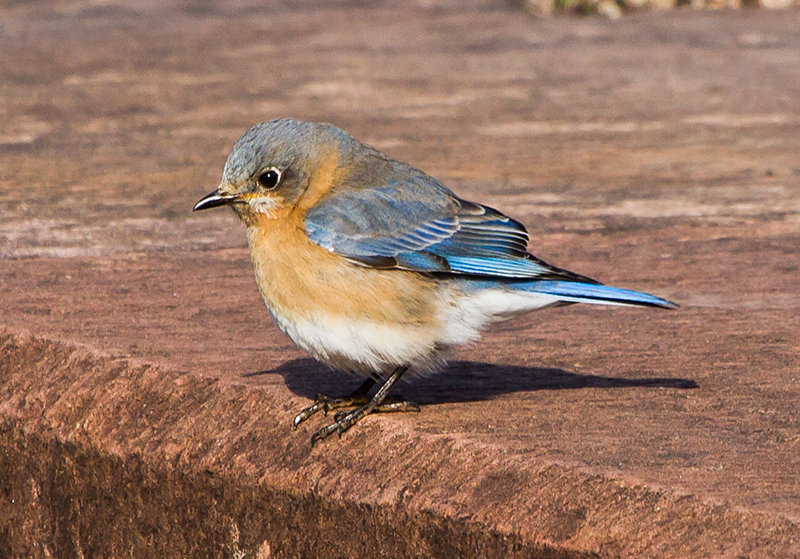
Females are more difficult to identify. They also have the white belly and rufous breast, but the head and back are grayish-brown. The wings have a few light blue highlights that can be difficult to see.
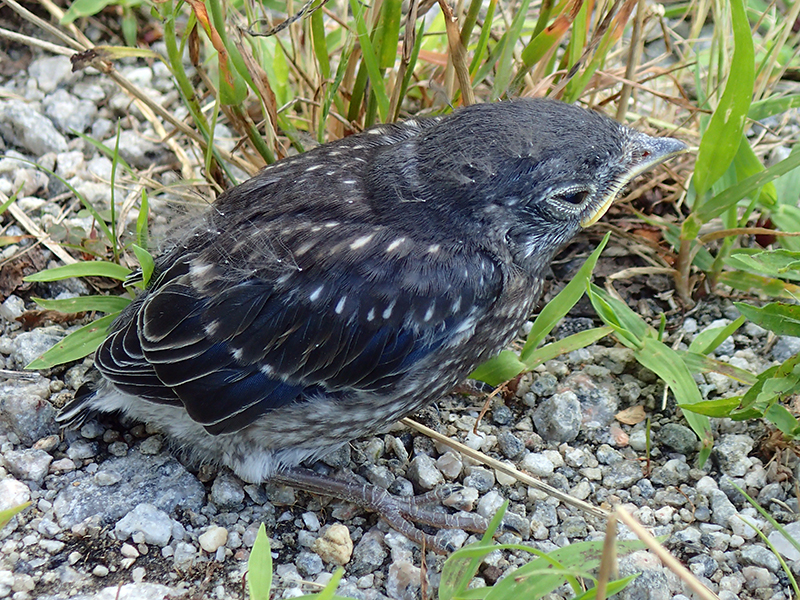
Juveniles have a dark back with white spots. The feathers have traces of blue.
Vocalizations
The song of the Eastern Bluebird consists of a few warbled notes that have a worried quality.
Hear the vocalizations of the Eastern Bluebird.Notes
The Eastern Bluebird population declined sharply during the 20th century. Bluebirds flourished during the 19th century when a lot of land was cleared for agriculture, and farmers erected fences with wooden posts. Bluebirds are cavity nesters, and they nested in fence post holes that had been excavated by woodpeckers. The decline was caused by a number of factors, including the replacement of wooden fence posts with metal ones, and the competition for the remaining holes from invasive species such as European Starlings and House Sparrows. As early as the 1930s, people began to build bluebird trails — areas with artificial houses for the bluebirds. The effort intensified during the ensuing years, and in 1978, Lawrence Zeleny created the North American Bluebird Society. This organization and others at the state and local level (such as the Virginia Bluebird Society) continue to maintain and monitor bluebird nest boxes to try to help the species.
Origin of Names
Common Name: Eastern distinguishes the species from a similar species in western North America. Bluebird from the male's plumage.
Genus Name: Sialia means some type of bird.
Species Name: Sialis is a variant of Sialia.
Eastern Bluebird video footage
Return to the Index
